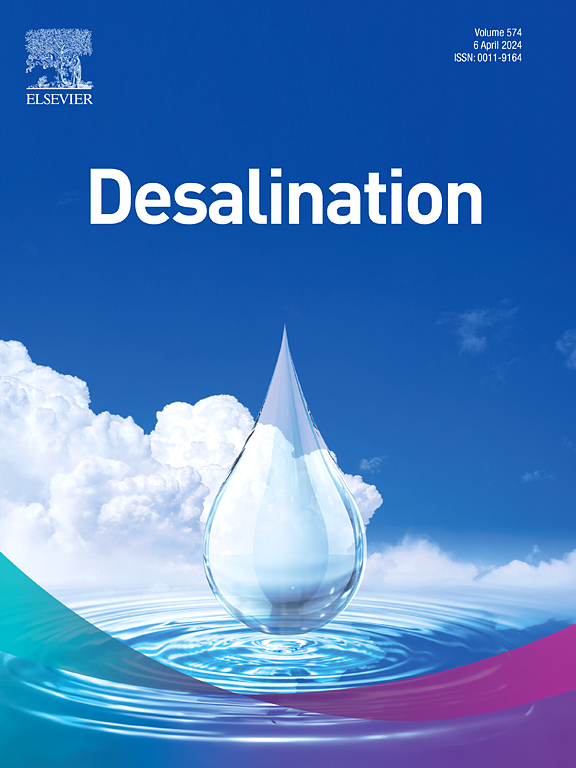Effect of structural parameters on cavitation performance of a novel counter-rotating hydrodynamic cavitation reactor for seawater pre-treatment
IF 8.3
1区 工程技术
Q1 ENGINEERING, CHEMICAL
引用次数: 0
Abstract
A new seawater pretreatment method based on hydrodynamic cavitation technology applied to seawater reverse osmosis desalination was proposed, based on which a counter-rotating hydrodynamic cavitation reactor (HCR) was designed. A combination of high-speed camera experiments and numerical simulations was used to investigate the flow characteristics of cavitation within the counter-rotating HCR. It is found that the cavitation at the tip of the oblique-tooth rotor was accompanied by wake vortex shedding during the development and evolution. Besides, the effects of structural parameters of the cavitation-inducing key components, the oblique-tooth rotor and the flat-tooth rotor, on the cavitation performance were investigated in detail. The cavitation generation efficiency was analyzed for various interaction gaps of the rotor, the number of grooves of the flat-tooth rotor, and the inclination angle of the oblique-tooth rotor. The results show that the counter-rotating HCR with an interaction gap of 1 mm, a groove number of 13, and an inclination angle of 8°-8° obtained the optimal cavitation performance. Finally, the disinfection performance of counter-rotating HCR was evaluated by E. coli inactivation experiment. It is found that the cavitation device has high disinfection performance. Moreover, the inactivation effect of free radicals on E. coli was weak, while the strong shear stress caused by cavitation collapse mainly damaged the cell structure of E. coli, which was also verified by Scanning Electron Microscope.
求助全文
约1分钟内获得全文
求助全文
来源期刊

Desalination
工程技术-工程:化工
CiteScore
14.60
自引率
20.20%
发文量
619
审稿时长
41 days
期刊介绍:
Desalination is a scholarly journal that focuses on the field of desalination materials, processes, and associated technologies. It encompasses a wide range of disciplines and aims to publish exceptional papers in this area.
The journal invites submissions that explicitly revolve around water desalting and its applications to various sources such as seawater, groundwater, and wastewater. It particularly encourages research on diverse desalination methods including thermal, membrane, sorption, and hybrid processes.
By providing a platform for innovative studies, Desalination aims to advance the understanding and development of desalination technologies, promoting sustainable solutions for water scarcity challenges.
 求助内容:
求助内容: 应助结果提醒方式:
应助结果提醒方式:


